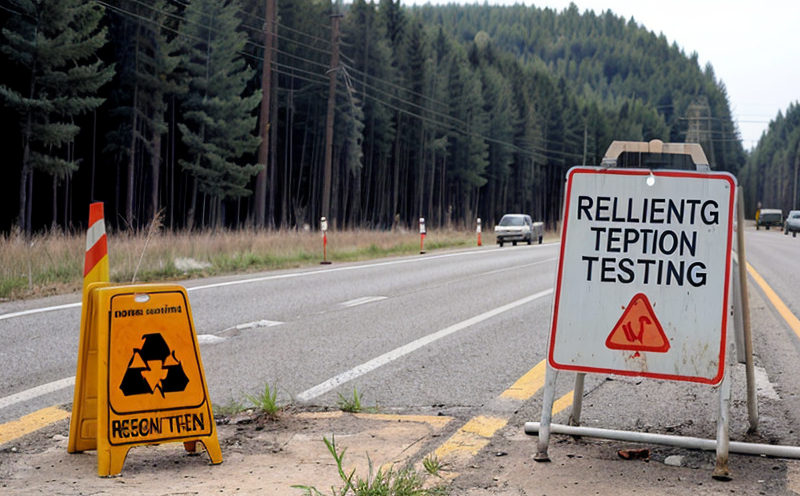ASTM D7292 Environmental Gamma Radiation Dose Rate Testing
The ASTM D7292 test method is designed to measure environmental gamma radiation dose rate from natural and artificial sources. This critical testing ensures compliance with international standards, particularly for facilities involved in nuclear waste management, radioactive material transportation, and other sectors where radiation exposure needs to be accurately quantified.
Environmental gamma radiation dose rate testing is essential in ensuring the safety of both workers and the general public by providing accurate measurements that can inform risk assessment. The ASTM D7292 method utilizes a portable gamma radiation detector equipped with a high-purity germanium (HPGe) semiconductor to measure the ambient radiation levels.
The test involves placing the HPGe detector at various points around the facility or area of interest, ensuring that all potential sources are covered. The detector collects data on the gamma radiation dose rate over a specified period, which is then analyzed against the reference values provided in ASTM D7292. This process allows for the identification and quantification of any unusual spikes in radiation levels.
One key aspect of this testing is the preparation of the environment prior to measurement. The area must be free from other sources of interference, such as x-rays or beta particles, which could skew the results. Additionally, personnel involved in the testing should wear appropriate protective gear and follow strict protocols to minimize their own radiation exposure.
The ASTM D7292 method specifies that the test should be conducted under specific conditions, including temperature and humidity control, to ensure accurate measurements. The data collected is then compared against established reference values, which are based on international standards such as ISO 18534-1:2014 for gamma radiation.
| Standard | Description |
|---|---|
| ASTM D7292-18a | This standard provides the method for measuring ambient gamma radiation dose rate using a portable HPGe detector. |
| ISO 18534-1:2014 | This international standard defines the measurement of ambient ionizing radiation levels and includes guidelines for dosimetry. |
The results of ASTM D7292 testing are crucial for regulatory compliance, ensuring that facilities meet the required standards set by organizations such as the International Atomic Energy Agency (IAEA) and national regulatory bodies. The data can also be used to inform risk management strategies and to support decisions regarding the safe handling and disposal of radioactive materials.
Understanding the nuances of ASTM D7292 testing is vital for those in the nuclear sector, as it directly impacts operational safety and compliance. By adhering to these standards, organizations can ensure that they are operating within legal and regulatory frameworks, thereby protecting both their personnel and the environment.
Applied Standards
| Standard | Description |
|---|---|
| ASTM D7292-18a | This standard provides the method for measuring ambient gamma radiation dose rate using a portable HPGe detector. |
| ISO 18534-1:2014 | This international standard defines the measurement of ambient ionizing radiation levels and includes guidelines for dosimetry. |
Benefits
- Ensures compliance with international standards, thereby reducing the risk of legal penalties.
- Provides accurate data for risk assessment and safety planning.
- Supports regulatory compliance by meeting stringent radiation measurement requirements.
- Aids in the safe handling and disposal of radioactive materials by providing reliable dose rate measurements.
- Reduces uncertainty in environmental monitoring, ensuring that facilities are operating safely within their designated areas.
Quality and Reliability Assurance
The quality of ASTM D7292 testing is critical for maintaining the integrity of data used in decision-making processes. Our laboratory employs rigorous quality control measures, including regular calibration of instruments and adherence to strict operational protocols. This ensures that all measurements are accurate and reliable.
We also maintain robust documentation practices, allowing us to trace every step of the testing process. This transparency is crucial for meeting the stringent requirements set by regulatory bodies such as the IAEA and national regulatory authorities. Our commitment to quality extends beyond individual tests; we continuously review our processes to incorporate new technologies and best practices.
To further enhance reliability, we perform internal audits and external certifications regularly. These activities ensure that our testing methods remain up-to-date with the latest scientific advancements in radiation measurement technology. By adhering to these stringent standards, we provide clients with confidence that their data is both accurate and reliable.





